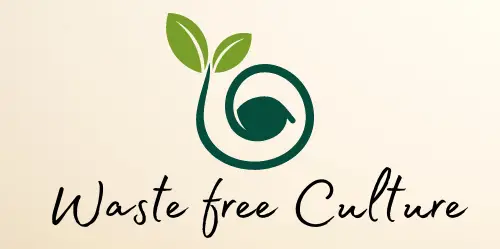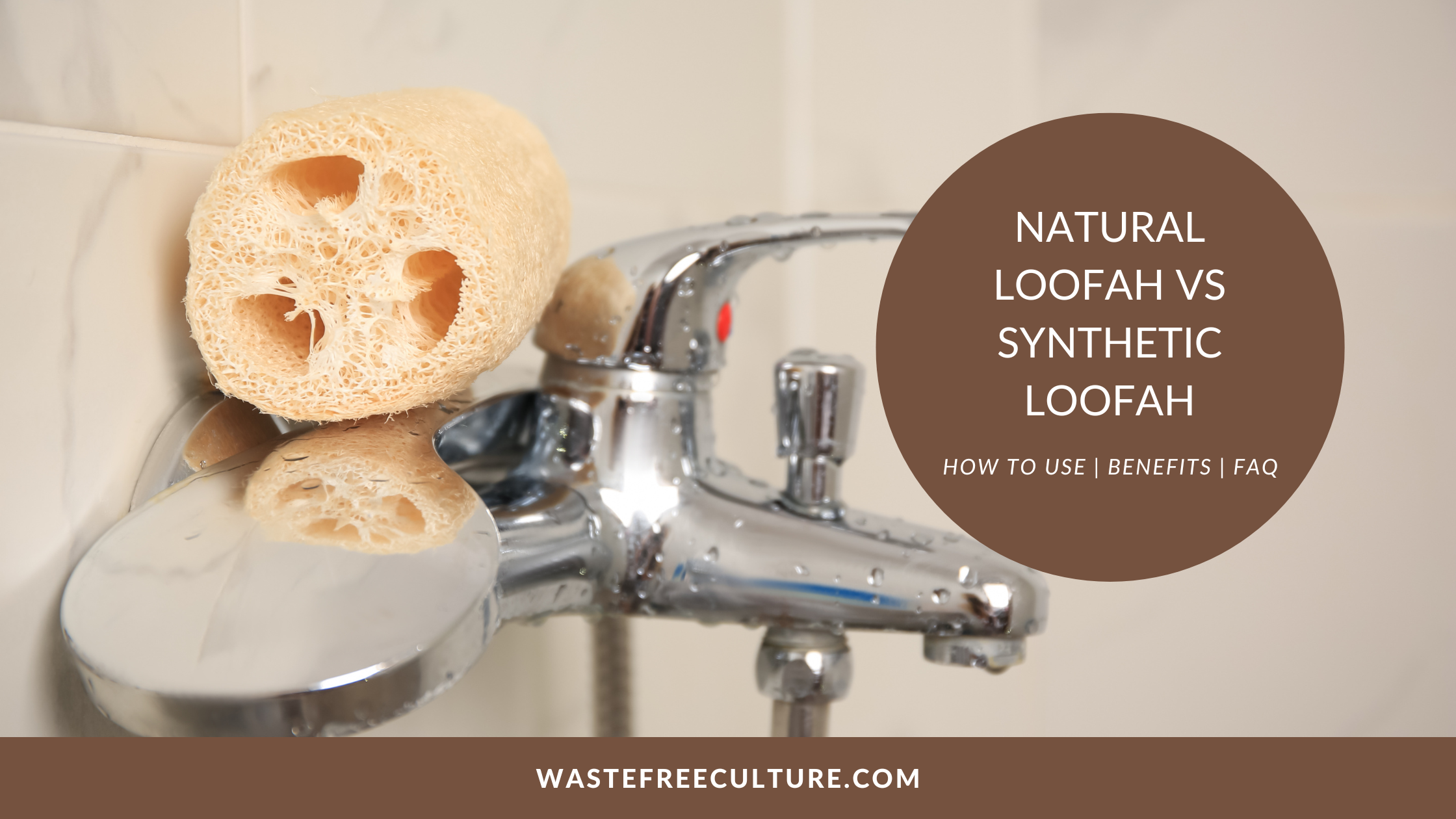Plastic loofahs are typically made of a synthetic material called polyethylene or nylon, which are types of plastic. When used, these materials can shed microplastics into the water supply or the environment. Over time, these microplastics can accumulate in aquatic ecosystems, where they can be ingested by fish and other marine organisms.
To reduce the environmental impact of your personal care routine, you might consider using alternative products to plastic loofahs, such as natural loofahs or washcloths made from cotton or bamboo. These options are biodegradable and less likely to contribute to microplastic pollution.
Today we’re gonna look into the difference between the Natural loofah & Synthetic loofah, the benefits of Natural loofah, and how to use it!
Natural loofah, also known as luffa or sponge gourd, is a fibrous fruit that is commonly used as an exfoliating tool for the skin. My grandma used to give us these natural loofahs whenever we visit her during our summer vacation! These loofahs are easy to grow and we can just find them in her yard! Good old days 🙂
Okay now, let’s look into the differences.
Table of Contents
Natural Loofah vs Synthetic Loofah
|
Natural loofahs |
Synthetic loofahs |
| As I said earlier, natural loofahs are made from the fibrous skeleton of the loofah plant, which is a type of cucumber. | Synthetic loofahs, on the other hand, are typically made from plastic materials such as nylon or polyester. |
| They are biodegradable and can be composted at the end of their life. | They are not biodegradable and can take hundreds of years to break down in a landfill. |
| Natural loofahs are renewable and can be grown without the use of pesticides or chemicals. | The production of synthetic materials often involves the use of fossil fuels and other non-renewable resources. |
| Natural loofahs tend to be more durable than synthetic loofahs, as they are made from a tough plant material that can withstand repeated use. | Synthetic loofahs may start to break down or lose their shape after a few uses. |
Benefits of Natural Loofah for Skin
Exfoliation:
The rough texture of natural loofah helps to remove dead skin cells, dirt, and other impurities from the skin, leaving it smoother and brighter.
Stimulates circulation:
Using a loofah can help to stimulate blood circulation in the skin, which can improve the appearance of cellulite and varicose veins.
Improves skin texture:
Regular use of a loofah can improve the texture of the skin by promoting the new skin cells growth.
Unclogs pores:
The exfoliating action of a loofah helps to unclog pores, which can reduce the occurrence of blackheads and acne.
Enhances absorption of skincare products:
Exfoliating with a loofah can help to remove the dead skin cells that can block the absorption of skincare products, allowing them to penetrate more deeply into the skin.
How to use a natural loofah sponge
Using a natural loofah is fairly simple.
- Before you start using the loofah, make sure it’s thoroughly wet. This will soften it up and make it easier to use.
- Apply your favorite soap or body wash to the loofah.
- Use the natural loofah to scrub your skin in circular motions, starting from your feet and working your way up. Be gentle, especially on sensitive areas of the skin, and pay extra attention to areas that tend to get rough, like your elbows, knees, and feet.
- Once you’re finished scrubbing, rinse off the soap and any dead skin cells that have been sloughed away.
- Hang the loofah to dry in a well-ventilated area. It’s important to let it dry completely between uses to prevent bacteria growth.
FAQ:
When should I replace my natural loofah?
Replace the natural loofah every 3-4 weeks or when it starts to show signs of wear and tear.
Is it OK to share a loofah?
No. Do not share loofahs with others, as they can harbor bacteria and other microbes that can spread infections.
Can we use a natural loofah for sensitive skin?
It is important to note that while natural loofahs are generally considered safe for most skin types, they can be too harsh for sensitive skin. It may cause irritation or even damage to the skin.
People with sensitive skin may find that using a natural loofah can lead to redness, itching, or even small cuts on the skin as its texture can be quite abrasive.
It’s best for people with sensitive skin to opt for a gentle exfoliating method. A soft washcloth made specifically for sensitive skin can be a better option. Additionally, it’s important to be gentle when exfoliating sensitive skin, as over-exfoliating can lead to further irritation.
If you still want to use a natural loofah for sensitive skin, try to find one that is softer and more pliable than traditional loofahs. These are sometimes marketed specifically for sensitive skin. Be sure to test the loofah on a small area of your skin before using it all over to make sure it doesn’t cause any irritation or discomfort.
How to make natural loofah at home?
Making/ growing a natural loofah at home is relatively easy. Here’s how you can do it:
Materials needed:
- Luffa seeds
- Large container
- Compost or soil
- Trellis or other vertical support structure
- Pruning shears
Instructions:
- Purchase luffa seeds from a garden center or online store. Make sure they are not treated with any chemicals or pesticides.
- Fill a large container with compost or soil and plant the luffa seeds about 1 inch deep. Water the soil well.
- Place the container in a sunny location and provide a trellis or other vertical support structure for the luffa plants to climb.
- Water the plants regularly and fertilize them with a natural fertilizer if desired.
- Prune the plants as they grow, removing any dead or diseased leaves and cutting back any shoots that are not producing fruit.
- Wait for the luffa fruit to mature on the vine. They will turn brown and become dry when they are ready to be harvested.
- Use pruning shears to cut the luffa fruit from the vine.
- Soak the harvested luffa fruit in water for several hours until the skin softens and can be easily removed.
- Remove the skin and seeds from the luffa fruit and rinse it thoroughly with water.
- Hang the luffa in a warm, dry place to dry completely.
- Once the luffa is dry, it can be used as a natural loofah for exfoliating the skin.
Note: It’s important to allow the luffa fruit to fully mature on the vine before harvesting it. Immature luffas may not have developed the fibrous texture needed for use as a loofah.
How to use a natural loofah for dry brushing?
For dry brushing, you can try the ones with coconut coir.
Can we use a loofah on the face?
No, the skin on the face is delicate and sensitive, and using a loofah on it can be too abrasive and cause damage. It can lead to redness, irritation, and even micro-tears in the skin, which can increase the risk of infection and breakouts.
Instead of using a loofah on the face, you can opt for gentler methods of exfoliation, such as using a soft-bristled brush or a coffee scrub.
Do natural loofahs hold bacteria?
Yes, natural loofahs can potentially hold bacteria if they are not properly cleaned and dried after each use. Loofahs are porous, and their fibers can trap moisture and provide a suitable environment for bacteria to grow.
It is important to clean your loofah regularly by rinsing it thoroughly with hot water after each use and allowing it to dry completely before using it again. You can also disinfect your loofah by soaking it in a mixture of water and vinegar or using antibacterial soap.
If you notice any signs of mold or unpleasant odors coming from your loofah, it is best to replace it immediately to prevent the spread of bacteria.
How to clean a natural loofah?
Rinse off with warm water and follow the above steps.
Where can I find a Natural loofah with a handle?
You can find it here.
Can you use a natural loofah to wash dishes?
Yes, of course, it’s a great alternative to plastic dish sponges!
What are some alternatives to Natural loofah?
If the natural loofah doesn’t suit your skin and if you’re looking for an alternative, there are several options you can consider:
Konjac Sponge:
This is a natural and biodegradable sponge made from konjac root. It’s gentle on the skin and can be used for exfoliating and cleansing.
Sea Sponge:
These sponges are harvested from the ocean and can be used as a natural alternative to a loofah. They’re also biodegradable and gentle on the skin.
Washcloth:
You can just use a soft washcloth as an alternative to a loofah. It’s easy to use, and you can wash it after each use to keep it clean.
Brush:
A natural bristle brush can also be used for exfoliating and cleansing. Make sure to choose one with soft bristles to avoid skin irritation.
Pumice Stone:
This natural stone is perfect for exfoliating rough skin on your feet and heels. You can also use it on other areas of your body, but be careful not to scrub too hard.
Remember to choose a natural alternative that suits your skin type and needs.
Let me know your experience with the natural loofah in the comments below!
Follow me in social media:
